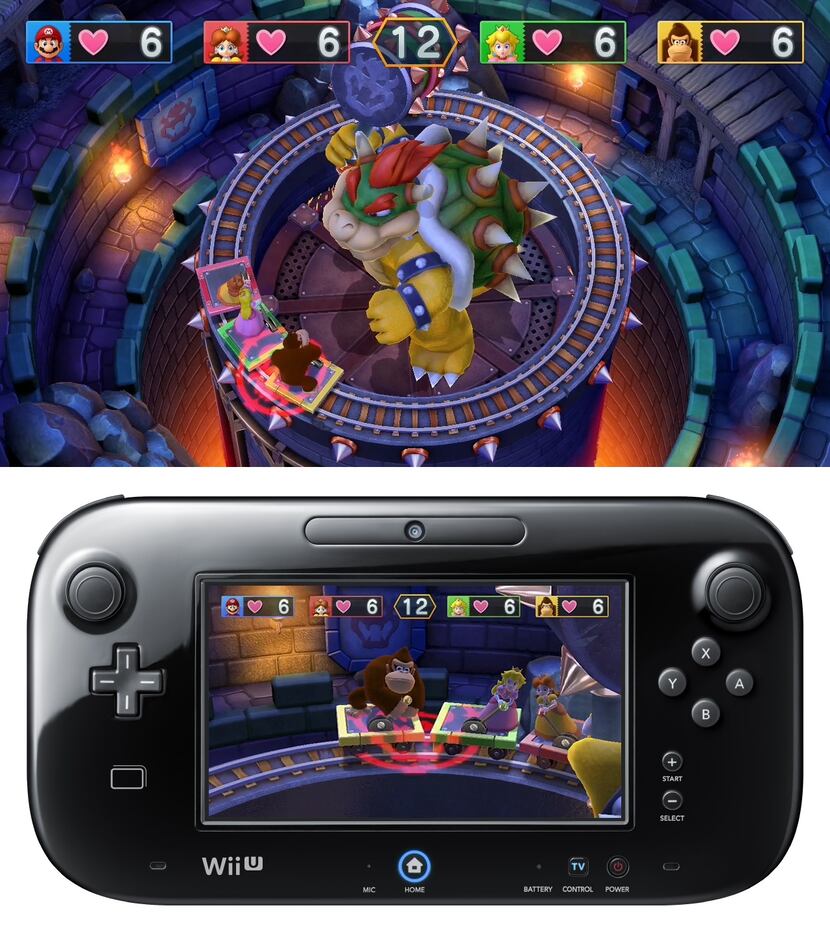Though I haven't played every game in the series, Mario Party has a special place in my heart. It was a game I played a lot of on the N64, both with my sister at home and with friends during real-life parties.
So to some extent, there's always a bit of me that plays the modern Mario Party games and says, "This isn't the zany board game I remember. Why'd they change what wasn't broken?" That part of me is crazy, for the record. Mario Party on the N64 was far from perfect, and if the series hadn't changed at all in 10 games it would be beyond stale at this point.
I give you this backstory to say: It's hard for me to tell if I dislike parts of Mario Party 10 because they're bad or simply because they're different.
But let's start with the good stuff first. As in all previous Mario Party games, part of the action takes place on a relatively traditional board game (well, board game-like). You roll dice, you move forward, and landing on different spaces results in different things happening.
But in between rounds of dice rolls all four players participate in a mini-game, the winner of which usually gets extra coins (though this varies some by which game in the series you're playing). The competitive mini-games in Mario Party 10 are generally pretty good, and they add a significant element of skill to help balance out the utter randomness on the board game half of Mario Party.

Which is good, because MP10's board game follows in the footsteps of MP9 in having all players traverse the board at the time time -- a system I'm personally not too fond of.
Basically, all four player characters are in the same vehicle together. When it's your turn, you roll the dice and everyone moves together -- but the currently active player is the one who reaps the benefits and/or punishments of where the group ends up on a board. So if, say, it's your dice roll that causes the group to land on a spot in which you lose stars, you're the only player that suffers.
On one hand, this allows games to move quickly and avoid board repetition. At the same time it has a negative impact on your sense of individual accomplishment. In earlier games in the series, coming to a fork in the road could make for a serious decision that you have to think over carefully, because it could determine where you are two or three moves from now. In Mario Party 10 it hardly matters, because the next several moves aren't up to you anyway.
It doesn't ruin the experience. You can still have plenty of fun with Mario Party 10's game boards. It just something to keep in mind if, like me, you long for the older play style.
Weirdly, a shadow of the N64 classic Mario Party games can be found in Mario Party 10's Amiibo Party mode.
In one way, Amiibo Party is barebones. The board is one small, square shape on which players go around multiple times (Monopoly-style), and while special spaces exist to land on, they're no nearly as extravagant as the main game's boards. But I like it that way. The Amiibo Party boards and pieces are made to resemble (at least a little) a real board game, lack of animations and all.
You still roll dice to move, and you still play a mini-game between turns, but here's the kicker: Winning the mini-games gets you coins. With 20 coins, you can pass certain spots on the board and buy a star. The player with the most stars at the end of the game wins.
Sound familiar? That's more or less exactly how Mario Party 1-3 played out.
The downside to the Amiibo Party mode is that it's pricey. To play with four people you need four amiibo figures of Mario Party characters -- Mario, Peach, Donkey Kong etc. Your appropriate Super Smash Bros. amiibo will work (I used my Rosalina figure while playing), but only for the characters that are already in Mario Party. So, sorry, but you won't be bringing Link or Kirby into Mario Party. (Side note: If you do use an amiibo you bought for Smash Bros., keep in mind that you'll have to wipe the Smash data off of it to use it with Mario Party.)
In addition to Amiibo Party, Mario Party 10's most-touted addition is the ability for one player to play as Bowser and work against the other four players.

Essentially, the Bowser player will use the GamePad in a collection of specific mini-games in which they will try their best to knock out all the other players. It's four against one, so while Bowser's abilities tend to be overpowered, the four normal players are expected to cooperate in order to topple him.
This is actually more fun than I expected it to be, and it's a good use of the Wii U's GamePad. Unfortunately there aren't a ton of mini-games included in this mode (there's a solid handful, but you'll see them all repeated often the more you play), and some of them feel too unbalanced. In some games it's easy for Bowser to knock everybody out without much trouble. In others, he can barely make a dent. The places even more responsibility on the randomness of the game selection rather than the skill of the players in question.
All that aside, with the right group of people Mario Party 10 can be a blast -- especially with younger players. Get the kids to team up against mom playing as Bowser and you can have a great family night.
But there's not a ton here that Mario Party veterans haven't seen before, and those of you who don't want be completely at the mercy of a dice roll might want to look elsewhere.

